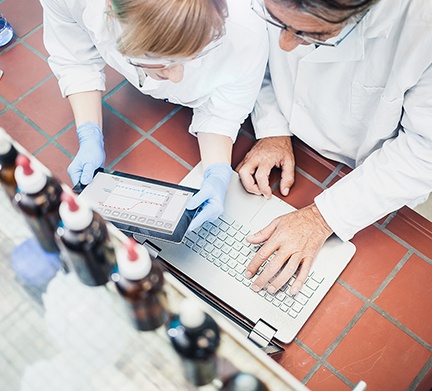 A customized deposition system can help you achieve the best results with maximum efficiency. For example, a well-designed combinatorial deposition system can execute a program to produce a wide range of slightly different film compositions, each deposited within discrete test pads on a single substrate. This makes it possible to explore an enormous range of material combinations and structures within a single wafer run. Effective combinatorial deposition experiments require precise control over several deposition parameters, such as selection from multiple magnetrons and types of power supplies, target-to-substrate distance, mass flows from multiple MFCs, pressure, test pad exposure time, and exact substrate position. With full control of all parameters, practically any desired recipe can be executed within each test pad.
A customized deposition system can help you achieve the best results with maximum efficiency. For example, a well-designed combinatorial deposition system can execute a program to produce a wide range of slightly different film compositions, each deposited within discrete test pads on a single substrate. This makes it possible to explore an enormous range of material combinations and structures within a single wafer run. Effective combinatorial deposition experiments require precise control over several deposition parameters, such as selection from multiple magnetrons and types of power supplies, target-to-substrate distance, mass flows from multiple MFCs, pressure, test pad exposure time, and exact substrate position. With full control of all parameters, practically any desired recipe can be executed within each test pad.
To provide full control of all the parameters for a custom-built deposition tool, PVD Products constructs a customized user interface built on the flexible LabVIEW™ software platform and uses industry-standard programmable logic controllers (PLCs). Using a standardized control foundation makes our equipment "future proof"— ensuring that our customers can adapt the controls and data acquisition of their equipment as their requirements and new technologies develop.
Common types of software controls include:
- Complete control of all pneumatically-actuated items, such as valves and shutters
- Multi-layer thin film recipe generation from all types of deposition modalities. Software can also mix recipe generation between two or more deposition techniques, such as sputtering and evaporation, within the same chamber
- Power supply selection, and power, voltage, or current control, etc.
- MFC flow rates or ratios
- Closed-loop pressure control (both up-stream and downstream)
- Substrate temperature profiles for heating and cooling systems
- Control and operation of a wide variety of lasers
- Precise motion control of internal or external components
- In-situ RHEED, ellipsometry, and other analytical techniques
- Full data logging of all relevant parameters
To learn more about PVD's combinatorial deposition development and our advances in system software, download our white paper:



Leave a Comment